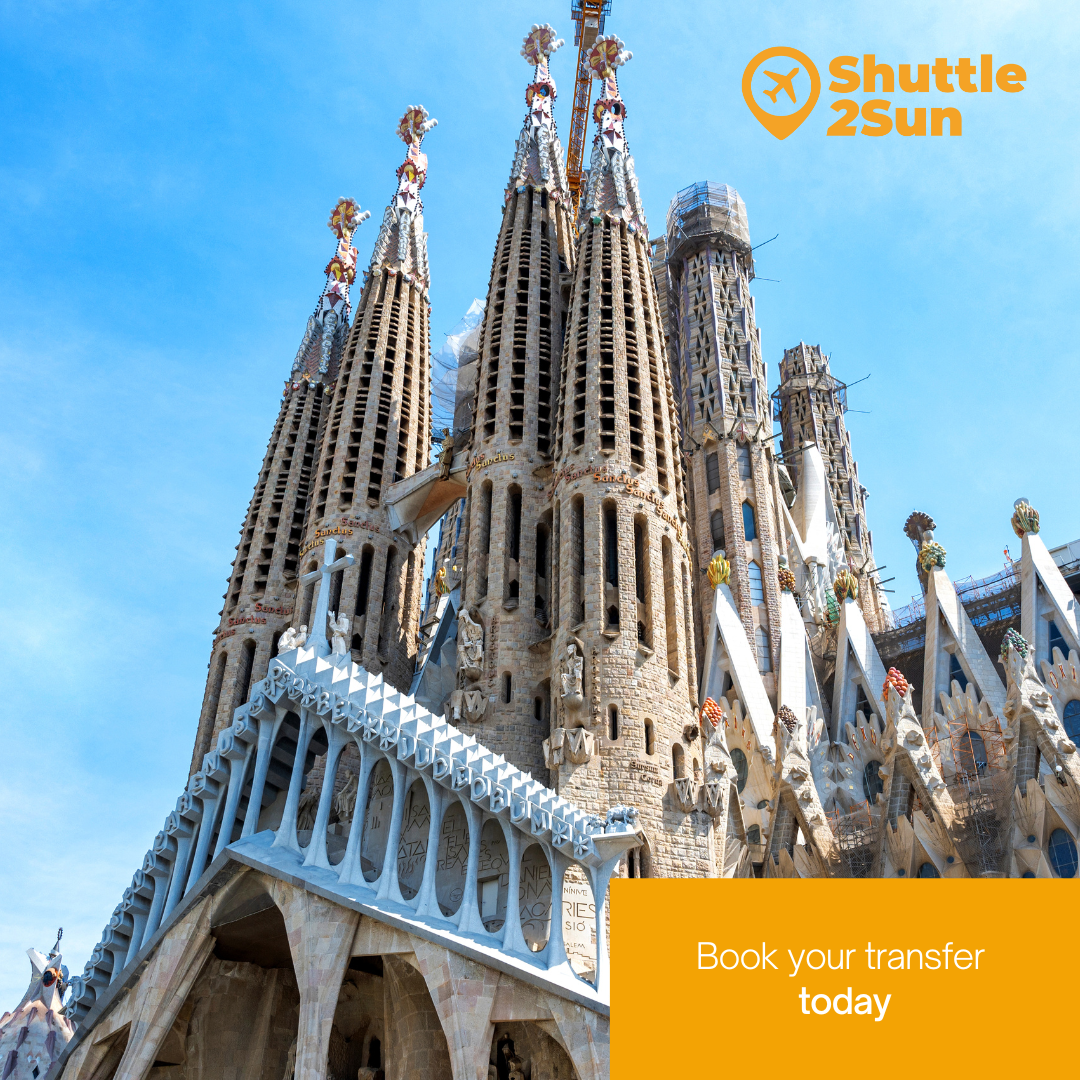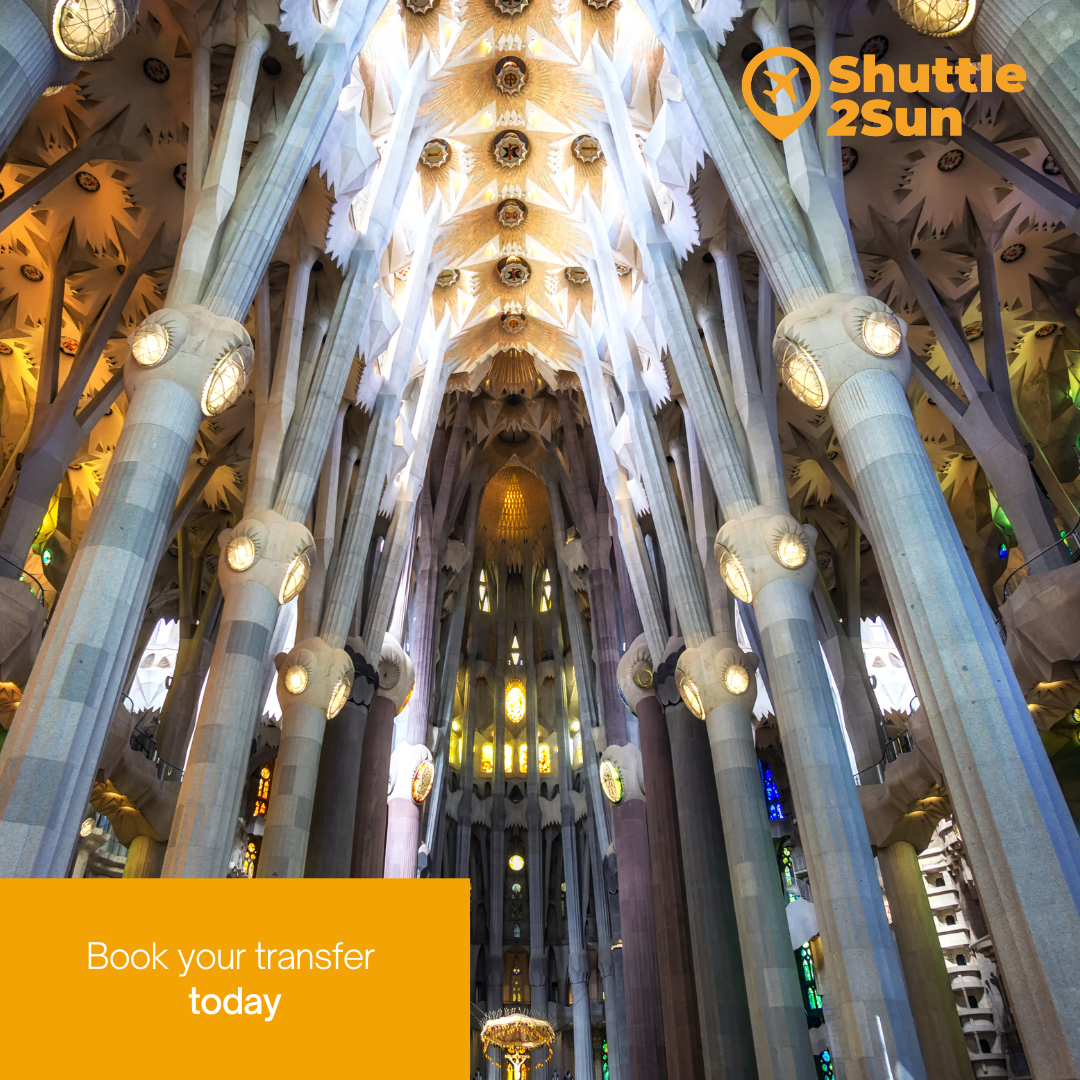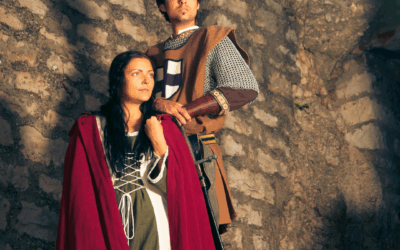Few architectural works arouse as much admiration and awe as the Sagrada Familia in Barcelona. With its unmistakable towers and unique fusion of religious symbolism, nature, and art, this basilica is not only one of Spain’s most visited monuments but also an inexhaustible source of fascinating details that continue to surprise visitors from all over the world. Antoni Gaudí‘s masterpiece, the Sagrada Família is not just a church: it is a symbolic universe in stone.
Although it has been under construction for over 140 years, the church has never stopped evolving. This article is an invitation to delve into some of the best-kept secrets of the Sagrada Família: lesser-known stories, surprising architectural choices, and subtle details that often go unnoticed.
If you want to discover all the curiosities of this magical temple, we recommend Shuttle2Sun‘s shared transfer services and private transfer services to get to Barcelona from Barcelona airport, Barcelona port, Girona airport, Reus airport and Camp de Tarragona AVE train station.
Nature, Gaudí’s inspiration
Antoni Gaudí saw nature as the great model to follow in architecture, and in no other project did he capture it as profoundly as in the Sagrada Família. For him, there was no better inspiration than the work of divine creation, and every corner of the church reflects this philosophy.
From columns that branch out like trees to helical forms that evoke the growth of plants, the building is designed to resemble a stony forest, full of harmony and life.
The façades, meanwhile, are populated with flora and fauna carved with astonishing precision, representing not only natural beauty but also its symbolic charge. The interior is also flooded with light through stained-glass windows that mimic the chromaticism of the sky, sunsets, and foliage.
Gaudí did not imitate nature: he studied it, understood it and integrated it as the structural and spiritual essence of his masterpiece.
Another surprising aspect of the Sagrada Família is that there are hardly any straight lines in its architecture. Antoni Gaudí maintained that nothing in nature is completely straight: trees, mountains, sea waves… everything is made up of organic curves. As Gaudí himself said: ‘The straight line belongs to man; the curve, to God’.

A sculptural account of the life of Christ
The Sagrada Família is not just a temple; it is also a narrative in stone of the life of Jesus. This narrative unfolds across three monumental façades, each dedicated to a key moment in the Christian story: the birth, the passion and the glory.
The Nativity Façade celebrates the coming of Christ into the world. Gaudí personally supervised its construction and managed to see it completed before his death in 1926. Its style is profoundly naturalistic and full of details symbolising life, hope and light: animals, vegetation, angels and meticulously sculpted biblical scenes.
On the other hand, the Passion Façade offers a marked contrast. With its hard, sober lines, this part of the church depicts the suffering and death of Jesus. The sculptures, the work of Josep Maria Subirachs, are angular, dramatic and expressive, emphasising the pain and sacrifice.
Finally, the Façade of Glory, still under construction, will be the largest and most majestic. Dedicated to the resurrection and eternal life, it is intended to represent the ascension of the soul to God. This façade will be the main entrance to the temple and will include references to the Last Judgement and the eight beatitudes.

Remember that with the shared transfer services and private transfer services offered by Shuttle2Sun, you can travel to Barcelona from Barcelona airport, Barcelona port, Girona airport, Reus airport and Camp de Tarragona AVE train station.
The commission that changed hands: from engineer to genius
Although today it is unthinkable to disassociate the name Antoni Gaudí from the Sagrada Família, the modernist architect was not, in fact, originally responsible for the project.
The initiative to build the church was promoted by the Asociación Espiritual de Devotos de San José, which commissioned the architect Francisco de Paula del Villar to carry out the work in 1882. His proposal followed a traditional neo-Gothic style, and work began on the crypt according to this design.
However, creative and administrative differences led to Villar’s resignation shortly after work began. In 1883, a young Antoni Gaudí, only 31 years old, was appointed director of the project and radically transformed the initial approach. The commission marked a turning point in Gaudí’s career, and he would end up devoting the last 43 years of his life almost exclusively to this monumental work.
The 18 towers that rise with humility
One of the most distinctive elements of the Sagrada Família are its 18 towers, each rich in symbolism. Gaudí designed the complex with the intention that the towers should represent the most important figures of Christianity: 12 apostles, 4 evangelists, the Virgin Mary and Jesus Christ. The central tower, dedicated to Jesus, will reach a height of 172.5 metres, making it the tallest of the complex.
However, this height was not chosen by chance. Gaudí, who was deeply religious, believed that man’s work should never surpass God’s creation. He therefore decided that none of the towers should exceed the height of Montjuïc hill, which at 173 metres represents, for him, the divine creation in the Barcelona landscape.
The Sagrada Família Museum, a tribute to Gaudí’s work
The Sagrada Família Museum provides an in-depth insight into Gaudí’s vision, housing original models, sketches, plans and historical documentation showing the evolution of the project. You can also see handwritten letters, working tools and period photographs.
To discover the secrets and curiosities of the Sagrada Família is to enter a living, constantly evolving work that continues to amaze the world and preserve its power to move and inspire, generation after generation. With Shuttle2Sun‘s shared transfer services and private transfer services, you can get to Barcelona from Barcelona Airport, Barcelona Port, Girona Airport, Reus Airport and Camp de Tarragona AVE train station.



